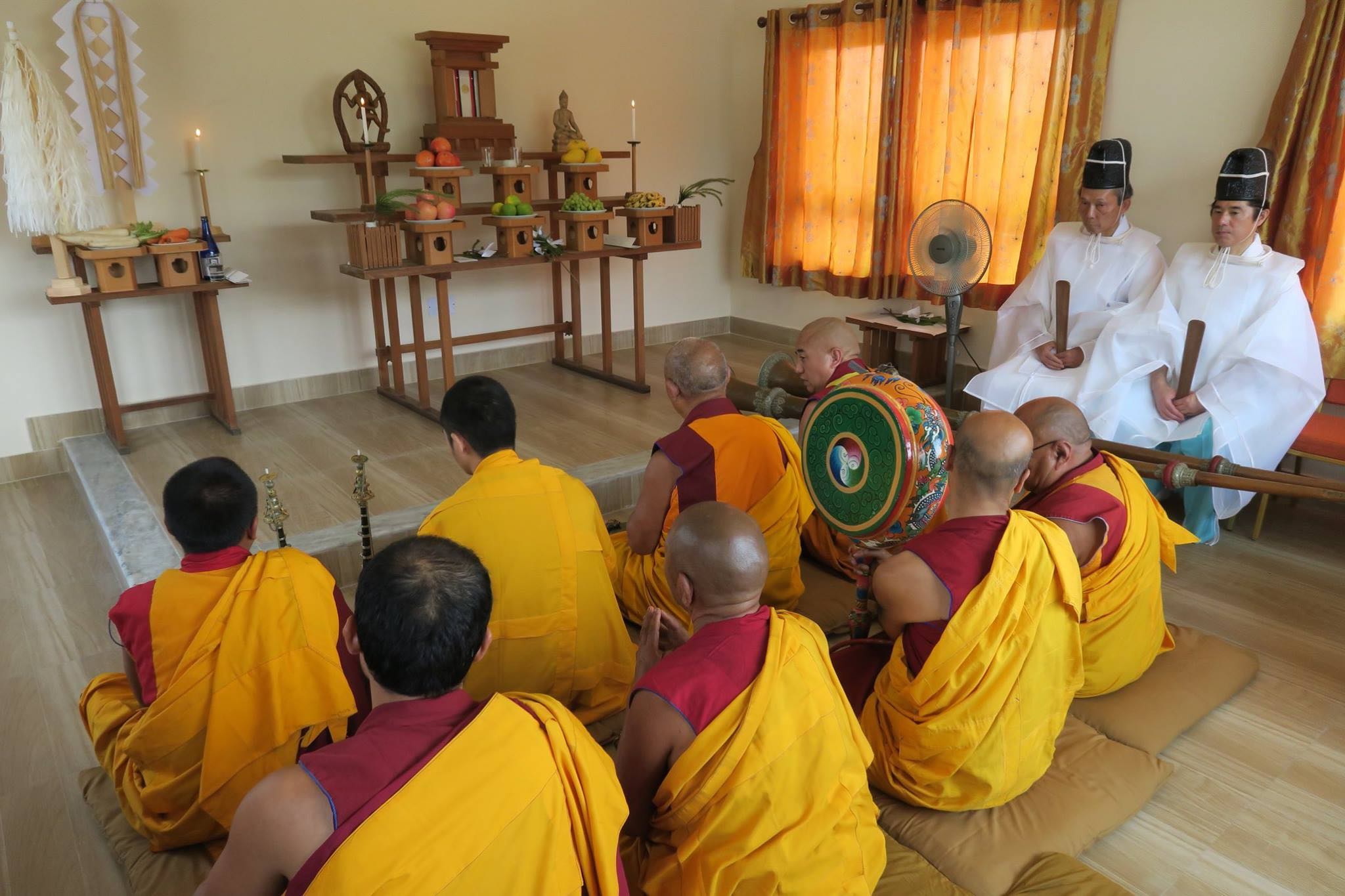
Oomoto, a Japanese new religion, often sparks curiosity due to its unique blend of Shinto and spiritual beliefs. Founded in the late 19th century by Nao Deguchi, this faith emphasizes world peace, art, and the unity of all religions. Did you know Oomoto has a rich history intertwined with Japanese culture and has influenced various aspects of society? From its intriguing rituals to its global outreach, Oomoto offers a fascinating glimpse into a spiritual movement that seeks harmony and enlightenment. In this article, we’ll uncover 35 captivating facts about Oomoto, shedding light on its origins, practices, and impact on the world.
What is Oomoto?
Oomoto, also known as Omoto-kyo, is a Japanese religion founded in the late 19th century. It blends elements of Shinto, Buddhism, and other spiritual traditions. Here are some fascinating facts about this unique faith.
-
Founded by Nao Deguchi: Nao Deguchi, a peasant woman, founded Oomoto in 1892 after experiencing divine revelations.
-
Universal Love: The core teaching of Oomoto is universal love and the belief that all religions stem from a single divine source.
-
Art and Culture: Oomoto places a strong emphasis on art and culture, believing that creativity is a divine gift.
-
Pacifism: The religion advocates for peace and non-violence, promoting harmony among all people.
-
Spiritual Practices: Followers engage in various spiritual practices, including prayer, meditation, and rituals to connect with the divine.
Historical Background
Understanding the historical context of Oomoto provides insight into its development and influence.
-
Meiji Era: Oomoto emerged during the Meiji Era, a time of significant social and political change in Japan.
-
Persecution: The Japanese government persecuted Oomoto during the early 20th century, fearing its growing influence.
-
Reconstruction: After World War II, Oomoto underwent a period of reconstruction and revitalization.
-
International Outreach: The religion expanded internationally, establishing centers in various countries.
-
Cultural Festivals: Oomoto hosts cultural festivals that celebrate traditional Japanese arts and crafts.
Key Figures in Oomoto
Several key figures have played pivotal roles in shaping and spreading Oomoto's teachings.
-
Onisaburo Deguchi: Nao Deguchi's son-in-law, Onisaburo, significantly contributed to the religion's development and international outreach.
-
Kiyoko Deguchi: Kiyoko, Nao's granddaughter, continued her family's legacy by promoting Oomoto's teachings globally.
-
Mitsuru Toyama: A prominent nationalist, Toyama supported Oomoto and helped protect it during times of persecution.
-
Mokichi Okada: A follower who later founded the Church of World Messianity, influenced by Oomoto's teachings.
-
Katsujiro Iwata: An artist and Oomoto member who promoted the religion through his creative works.
Beliefs and Practices
Oomoto's beliefs and practices are diverse, reflecting its syncretic nature.
-
Kami Worship: Followers worship kami, or spirits, believed to inhabit natural objects and phenomena.
-
Reincarnation: The religion teaches the concept of reincarnation, where souls are reborn in new bodies.
-
Divine Revelations: Oomoto places great importance on divine revelations received by its founders.
-
Purification Rituals: Rituals to purify the body and spirit are central to Oomoto's practices.
-
Sacred Texts: The Ofudesaki and the Reikai Monogatari are two of Oomoto's most important sacred texts.
Influence on Arts and Culture
Oomoto has had a significant impact on Japanese arts and culture.
-
Calligraphy: The religion encourages the practice of calligraphy as a form of spiritual expression.
-
Tea Ceremony: Oomoto promotes the traditional Japanese tea ceremony, emphasizing its spiritual aspects.
-
Noh Theater: Followers often participate in Noh theater, a classical Japanese performance art.
-
Ikebana: The art of flower arranging, or ikebana, is practiced by Oomoto adherents as a form of meditation.
-
Martial Arts: Some followers practice traditional Japanese martial arts, integrating spiritual principles.
Modern-Day Oomoto
Oomoto continues to evolve and adapt in the modern world.
-
Environmentalism: The religion advocates for environmental conservation and sustainable living.
-
Interfaith Dialogue: Oomoto engages in interfaith dialogue, promoting understanding among different religions.
-
Social Welfare: The religion supports various social welfare initiatives, helping those in need.
-
Education: Oomoto runs educational programs to teach its principles and values to the younger generation.
-
Digital Presence: The religion has embraced digital platforms to spread its teachings and connect with followers worldwide.
Unique Aspects of Oomoto
Several unique aspects set Oomoto apart from other religions.
-
Dual Leadership: Oomoto is led by both a spiritual and a temporal leader, reflecting its dual focus on spirituality and practical matters.
-
Symbolism: The religion uses various symbols, such as the cherry blossom, to represent its beliefs.
-
Language: Followers often use a unique form of Japanese, incorporating archaic and poetic expressions.
-
Community Living: Some adherents live in communal settings, fostering a sense of unity and shared purpose.
-
Global Vision: Oomoto envisions a world where all people live in harmony, transcending national and cultural boundaries.
Final Thoughts on Oomoto
Oomoto, a Japanese religion, offers a fascinating blend of Shinto and Buddhist beliefs. Founded in the late 19th century, it emphasizes world peace, art, and spiritual development. The religion's focus on universal harmony and cultural exchange makes it unique. Oomoto's teachings encourage followers to seek inner peace and contribute positively to society.
The religion's history is marked by periods of persecution and resilience, showcasing the dedication of its adherents. Oomoto's influence extends beyond Japan, impacting various art forms and spiritual practices worldwide.
Understanding Oomoto provides insight into a rich cultural tradition that values peace, creativity, and spiritual growth. Whether you're interested in religion, history, or art, Oomoto offers a unique perspective worth exploring.
Was this page helpful?
Our commitment to delivering trustworthy and engaging content is at the heart of what we do. Each fact on our site is contributed by real users like you, bringing a wealth of diverse insights and information. To ensure the highest standards of accuracy and reliability, our dedicated editors meticulously review each submission. This process guarantees that the facts we share are not only fascinating but also credible. Trust in our commitment to quality and authenticity as you explore and learn with us.
